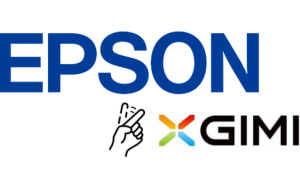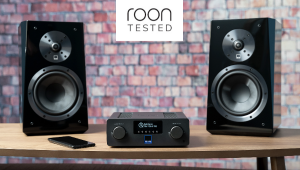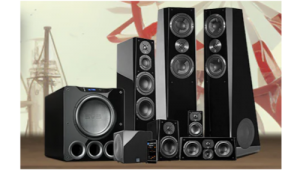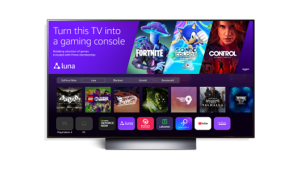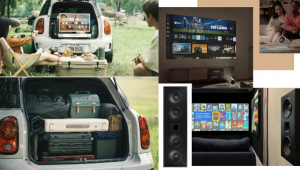No one asked for this. 4K streaming has improved but still trails 4K discs significantly in picture quality. Still only a handful of titles. ATSC 3.0 is still years away to making 4K mainstream and we're now having 8K crammed down our throats. I welcome everything that improves our user experience but this is something that's easily a decade or more away.
8K: It’s About Hyper-Realism, Not Just More Pixels
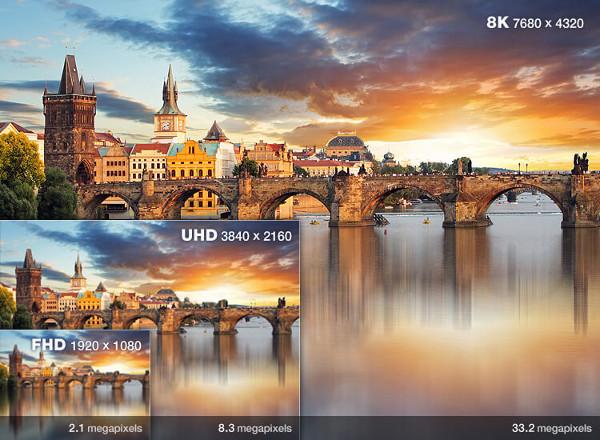
Image enhancements include a perception of higher brightness and contrast, sharper edges, greater depth of field, and greater tonality, all of which combine to create a 3D-like effect.
The summit was held in New York City by the 8K Association to promote 8K to the content-creation community, content distributors (such as streaming services), and consumers.
More than 100 attendees also learned that:
• Streaming services will take the lead in bringing native 8K content to U.S. homes
• Native 8K content could be available for streaming as soon as 2020 or 2021, though it wasn’t clear if that timeline includes the U.S.
• Prices on large-screen 65- and 75-inch display panels will fall significantly because of Chinese-factory overcapacity, encouraging consumers to step up to larger screen sizes that best display moving 8K images
• Professional tools for capturing, encoding and decoding 8K images are becoming more readily available to content creators to support the launch of native 8K content, though availability is still limited and the products are still expensive
Super Sophisticated Upscaling
Although native 8K content isn’t yet available in the U.S. through broadband streaming services or through cable- and satellite-TV providers, TV makers have incorporated increasingly sophisticated algorithms in their 8K TVs to upscale SD, HD, and 4K UHD content to 8K resolution.
The new algorithms are “incredible,” said Chris Chinnock, executive director of the 8K Association. A Samsung executive noted that all Samsung 8K TVs use machine learning to sharpen edges, create texture, and reduce video noise while reducing such artifacts as banding.

The Distribution Challenge
A major challenge to delivering native 8K content to U.S. consumers, however, is the need for a more efficient video-compression codec to replace the current widely used HEVC codec, said Mauricio Alvarez-Mesa, CEO of Spin Digital, a maker of video encoders and players.
Native 8K content features four times the pixels of a 4K image’s 8.3 million, and the ability to push more 8K content through the same pipe would encourage broad 8K adoption by service providers. The first 8K streaming services, however, will use HEVC, Alvarez-Mesa said.
For 8K streaming to take off in the U.S., households must also connect to fatter broadband pipes and faster Wi-Fi networks that many homes lack, Alvarez-Mesa added. “We really need faster connections.”
The 8K Advantage
To stimulate 8K adoption, everyone from content creators to consumers must be convinced that 8K makes a visible difference at typical viewing distances, presenters said.
To that end, YungKyung Park, associate professor of the College of Art & Design at Ewha Womens University in Seoul, presented the results of a study in which 120 observers said they saw visible improvements in 8K images and videos over their 4K counterparts on separate 65-inch TVs positioned side by side. The observers viewed the TVs at a distance of 9 feet in dark rooms that simulated nighttime viewing conditions.
For all images and videos, 8K performance was rated 35% higher overall. Perceived image quality increased 30% over 4K, and depth perception increased 60%, according to the study.
Each TV was calibrated at 500 nits of peak brightness. All observers had 20/20 vision and normal color vision, and all were shown the same 16 static images and same three videos on both screens.
Park also pointed out that the 8K videos and images that showed the greatest improvement contained objects or people at the front of the scene and in the center of the screen.
8K’s “hyper-realistic” images are four times denser than 4K images, creating the “illusion” of higher brightness, higher black-and-white and color contrast, and sharper edges, all attributes that capture an object’s 3D information. Viewers perceive an “illusion of depth” that can’t be measured, Park explained. “With 8K, expect hyper-realness.”
Video-services consultant Florian Friedrich of FF Pictures said 8K “makes pixels disappear as much as possible” along with digital artifacts such as flickering, thus creating an “analog look.”
 |
Phil Holland. |
The level of detail in 8K content gives consumers “a reason to rewatch [a program] and discover new stuff in a frame,” he added. In extra-wide shots, 8K makes even small people visible, and in nature images, 8K delivers nature’s subtle textures, with a leaf’s surface looking almost like a reptile’s skin in extreme closeups.
Ideal Viewing Distance
You’ll be able to discern the benefits of 8K without having to sit within 2 feet of a 65-inch screen or use binoculars from a typical viewing distance in the home, said Friedrich of FF Pictures.
To determine the ideal on-axis viewing distance (sweet spot) from a 16:9 8K TV, multiply the screen’s height by 2.5, he advised. For a 65-inch TV, the sweet spot is 6.6 feet from the screen. For a 75-inch TV, the ideal distance is 7.7 feet, and for an 85-inch TV, it’s 8.7 feet Friedrich said. At these distances, consumers will enjoy an ideal 45-degree field of view (FOV) to the TV.
He described distances of 2X and 3X a screen’s height as “good.” (See illustration below.) At twice the height of a 65-inch 16:9 8K TV, the viewing distance would be 5.3 feet, and for a 75-inch TV, it would be 6.1 feet.
At three times the height of a 65-inch 16:9 8K TV, the viewing distance would be 8 feet, and at three times the height of a 75-inch screen, the viewing distance would be 9.2 feet.
Another benefit is visible even if you’re sitting farther away: the elimination of aliasing (or flickering) of diagonal lines and diagonal edges, Friedrich said.

Codecs to Come
To deliver the benefits to homes, HEVC is “right for now,” but more efficient codecs such as VVC (Versatile Video Coding, or H.266) are needed to stimulate native 8K content distribution to U.S. homes, said Spin Digital’s Alvarez-Mesa.
HEVC is “right for now” because it is already widely adopted and available in most TVs, 8K HEVC encoding tools are available for content creation, and 8K HEVC decoders are available in chips for consumer products.
VVC, on the other hand, is still in development with a targeted 50% greater bandwidth efficiency compared to HEVC with the same subjective quality as HEVC. So far, however, the codec has achieved 37% greater efficiency at its current stage of development, Alvarez-Mesa said. Although a final standard is expected to be approved in July 2020, initial implementations aren’t expected to hit the 50% target, he added.
Higher broadband and home Wi-Fi speeds are also needed. A single 8K HEVC stream requires a minimum average bit rate of 84Mbps, Alvarez-Mesa explained. In contrast, the average fixed-broadband download speed in the U.S. was 95.25Mbps in the second and third quarters of 2018, based on consumer-initiated tests made through the Speedtest mobile-phone app, network-testing company Ookla said on its web site.
For streaming services such as Netflix, a more efficient codec other than HEVC is necessary “if the cost of Internet bandwidth remains the same for the next few years,” Alvarez-Mesa said.
A robust rollout of 5G fixed-wireless services that could replace wired broadband to the home would also help stimulate 8K programming by streaming services, given download speeds of 200Mbps and up.
For satellite TV companies, a single high-quality 8K HEVC program uses up the same amount of bandwidth as four 4K channels or 16 HD channels, and if the service provider compresses the 8K signal a lot, “you lose the 8K effect,” Alvarez-Mesa said.
As for adoption by local TV stations, next-generation TV broadcasts based on the fledgling ATSC 3.0 standard will have the bandwidth to support 4K but not 8K, Alvarez-Mesa said. TV broadcasters have promised that by the end of 2020 TV stations in 40 markets will deliver next-generation ATSC 3.0 TV signals to compatible TVs connected to indoor and outdoor TV antennas.
- Log in or register to post comments


I get that companies need to make something new and shiny to grab attention, but this needs to stop. Nobody is asking for 8K (just like no one was asking for 3D). Most consumers are just starting to get set-up for 4K, and content is still lagging. The last thing we want to hear about is 8K. In fact, I'll likely start actively avoiding companies that promote it.

BTW do you know where is the picture of the bridge from?


OMG brenro said it Where is the content coming from? I have killer internet and yet cannot watch a 4k movie without buffering events. Meanwhile easy accessible 4k media (rental) is almost no where to be found. Are we hopscotching over 4K to get 8K?

Good point, my cable TV box is its own modem for apps it presents to my 4k Samsung which is a different stream the the Samsung receives through wifi sources from the cable internet modem in the other room which is at least 300mbps (the internet modem not the wifi out of that modem). Using that wifi and tv set up streaming is good with the rare buffering event. Truth be told I don't even know the nominal speed of the tv box. On the other hand I'm not sure I can get a 4k movie out of Amazon on that box either and I still have buffering events.

They [manufacturers] probably are sticking to their business models, but unfortunately, content and related have lagged behind due to various factors.
You guys know how that goes, every year or two slowly roll out more features and related to encourage [or sometimes force] consumers to 'upgrade', etc. Not always the case, but often yes? [cameras, phones, etc]
I'm all for higher resolution, and have a full 4k set up with projector and OPPO UDP-205 player, and most of the time purchase latest releases on 4k. Dont do much streaming so, cant comment there.
Wish that web site REAL OR FAKE 4k was still around, was useful in determining actual resolution of a finished product/4k disk.
Just my 2 cents-
BM

Wide Screen Review seems to be pretty honest on telling if the 4k disk came from a 4K or better intermediate master or was up-scaled from a 2K intermediate master.

The industry has it backwards. They are testing our interest in the higher resolution sets before they start to deliver 8K content. Hell even the current 4K hdr BluRay disks for the most part are just up-scaled 2K Master Digital Intermediate files. The 2K files may have originally come from 4K or 8K original Intermediate files but have been reduced to 2K because they are easier and less time consuming to work with in post. Then they are up-scaled to 4K for BluRay release. They need to start releasing true 4K disks mastered directly from 4k and 8K intermediate master files. Then they can try and push 8K displays.

Thanks for the heads up on Widescreen Review!

I get it, the industry needs to evolve in order to keep selling us new equipment. However, it is WAY too early to be pushing 8k...if anything it will just create a consumer backlash. Most people haven't even upgraded to 4k setups yet, and those of us who have are frustrated by the limited content.

I was in Yodabashi Camera in Akihabra last year, they had two 100inch + displays, one was 4k, one was 8k. They were both being fed by the same 8k footage designed to show the benefits of 8k.
No difference.
The was no perceivable difference between the 4k and 8k displays at any distance.
Both similar screen tech, both set up correctly (I checked).
For the living room 8k is futile.
For editors, creators, maybe.





